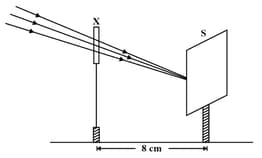Embibe Experts Solutions for Chapter: Refraction of Light at Curved Surfaces, Exercise 1: Exercise
Embibe Experts Physical Science Solutions for Exercise - Embibe Experts Solutions for Chapter: Refraction of Light at Curved Surfaces, Exercise 1: Exercise
Attempt the practice questions on Chapter 4: Refraction of Light at Curved Surfaces, Exercise 1: Exercise with hints and solutions to strengthen your understanding. Physical Science Crash Course (Based on Revised Syllabus-2023) solutions are prepared by Experienced Embibe Experts.
Questions from Embibe Experts Solutions for Chapter: Refraction of Light at Curved Surfaces, Exercise 1: Exercise with Hints & Solutions
Which of the following set of materials represents the minimum material required for determining the focal length of a convex lens by obtaining the image of a distant object on a screen in your school laboratory.
(i) Set A - A candle, a match box, a convex lens, a lens holder, a screen with stand.
(ii) Set B - A lens holder, a convex lens, a concave lens, a measuring scale.
(iii) Set C - A convex lens, a lens holder, a screen with a stand, a measuring scale.
(iv) Set D - A convex lens, a burning candle, a screen with stand, a lens holder.
A student used a device (X) to obtain / focus the image of a well illuminated distant building on a screen (S) as shown in the diagram. Select the correct statement about the device (X).

The focal length of a convex lens is . For an object placed away from the lens the image will be formed at-
When the incident ray is _____ to the principal axis, the refracted ray passes through the principal focus of the convex lens after refracting from it.
The central point of a lens is its _____.
Differentiate focal length and radius of curvature.
Write the role of lenses in our daily life.
Is the point and centre of curvature the same. Explain.
